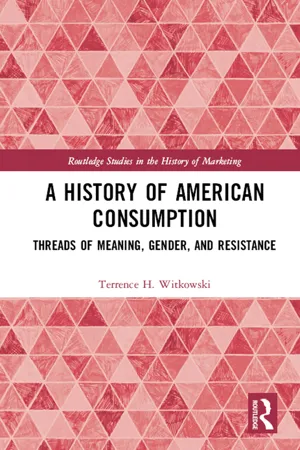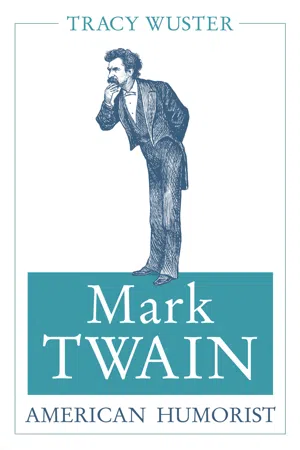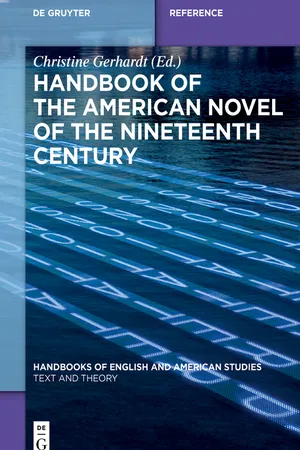History
Gilded Age Literature
Gilded Age literature refers to the literary works produced during the late 19th century in the United States, characterized by a focus on social and economic issues, industrialization, and the disparities between the wealthy elite and the working class. Writers of this period often critiqued the materialism and corruption of the era, offering insight into the complexities of American society during this time.
Written by Perlego with AI-assistance
Related key terms
4 Key excerpts on "Gilded Age Literature"
- eBook - ePub
- G. R. Thompson(Author)
- 2011(Publication Date)
- Wiley-Blackwell(Publisher)
Chapter 16 The “Gilded Age” Genteel Critics and Militant MuckrakersThe Gilded Age (1873) by Mark Twain and Charles Dudley Warner gave the Age of Big Business one of its most memorable labels. In American cultural history, the term “Gilded Age” invokes the period from the end of the Civil War through the 1890s, and slightly beyond. Associated with the rapid rise of Big Business are the Labor Movement, the Factory System, and the attempt of Corporate Capital (personified as the Robber Barons) to control it all – by violence if necessary. Within this time frame, political historians have identified other periods, most notably Reconstruction and the Progressive Era, terms embodying the contradictory tendencies of the times. But for most literary scholars and cultural critics, the “Gilded Age” is the label that has stuck.1The term emphasizes the problems and evils of laissez-faire capitalism. Gilded means covered with a thin layer of (usually) fake gold. In their comic Dickensian way, Twain and Warner strip away the pretty surface and expose the ugliness beneath the top layer of society, politics, and business. The word gilded also suggests American Victorian respectability and artifice, from the gilt-edges and decorations of fake books in simulated libraries, to elaborate gilded picture frames in over-decorated parlors, to insincere piety regarding personal behavior and business ethics.Novels of social criticism in the era generally took one of two forms: “genteel criticism” and “muckraking.” Among the Genteel Critics and historical romancers who sometimes cast a jaundiced eye on American manners, morals, and institutions are Henry Adams, Booth Tarkington, Winston Churchill, Robert Herrick, and W. D. Howells. The Muckrakers wrote both fiction and nonfiction in which they more militantly exposed the ugly underside of American capitalism and putative democracy. Important muckraking works include novels by Rebecca Harding Davis, John William De Forest, and David Graham Phillips; and journalistic exposés by Ida Tarbell, Lincoln Steffens, Jacob Riis, Thorstein Veblen, and Helen Hunt Jackson. The most famous of the American muckraking novels is Upton Sinclair's The Jungle - eBook - ePub
A History of American Consumption
Threads of Meaning, Gender, and Resistance
- Terrence Witkowski(Author)
- 2017(Publication Date)
- Routledge(Publisher)
5 The Gilded Age, 1865 to 1900Mark Twain – the pen name of Samuel Langhorne Clemens (1835–1910) – was still known mostly for his humorous travel books when, in 1873, he and his Hartford, Connecticut neighbor, the writer and editor Charles Dudley Warner (1829–1900), co-authored a novel they dubbed The Gilded Age: A Tale of Today. Their social satire of greed, land speculation, and corruption within government and among the newly rich gave the post-Civil War decades their lasting soubriquet – the Gilded Age. Like Shakespeare’s King John, who is advised “To gild refined gold, to paint the lily,/ … Is wasteful and ridiculous excess,” the extravagance of the very wealthy and powerful was a signal issue of the day (Cashman 1993). Indeed, extreme income inequality did characterize this period. Industrialists and financiers accumulated unprecedented wealth through deftly exploiting the prevailing system of laissez-faire capitalism. This did not go unnoticed among their numerous and often hostile critics who in 1882 coined the term “robber barons,” another soubriquet that would become part of the American lexicon (Tipple 1959). The expanding working classes, augmented by waves of new immigrants, found jobs in the factories and on the railroads, but lived under harsh conditions, toiled long hours at low pay, and suffered from very high rates of industrial accidents (Gordon 2016). Workers joined labor unions and, among other actions, organized massive railway strikes in 1877, 1886, and 1894 that inevitably resulted in deaths and violence.This chapter begins with an overview of the material and market context of Gilded Age consumption. In addition to reviewing key macro demographic and economic highlights, this section will briefly trace institutional developments in consumer marketing – department stores, five-and-ten cent stores, direct mail catalogs and distribution, chromolithographic printing, national magazines, and modern packaging – that affected many aspects of consumption. The next section on meaning follows the long-standing cultural threads of refinement and patriotism expressed through consumption, and then introduces the important topic of consumer brands and branding. The gender section first reviews female agency through new shopping environments (e.g., the department store) and new products (e.g., the bicycle), and then strings a new thread – men’s consumption and how it may have been shaped in part as compensation to real and perceived threats to male social status and masculinity. The threads of resistance will recount some of the critiques of leisure class excess and will introduce and explicate an important new term: to boycott. Conceptual distinctions pertaining to boycotting will be delineated along with a recap of some boycott actions taken in the 1880s and 1890s. - eBook - ePub
- Tracy Wuster(Author)
- 2017(Publication Date)
- University of Missouri(Publisher)
Everett Emerson wrote that the book “is unduly long (subscription-book length), badly plotted, and uneven. Perhaps the best thing about the book is its title. . . .” In 1965, Charles Neider went so far as to pull Mark Twain’s portion of the novel out, as if by literary cesarean, and publish it separately as The Adventures of Colonel Sellers. He argued that the book “lived” because of Mark Twain’s share and despite Warner’s. 8 But if the focus of Twain scholarship is shifted from primarily literary questions to cultural meanings, The Gilded Age becomes one of the central books in Mark Twain’s oeuvre. The relationship between literature and commerce in Mark Twain’s career is a central question as he shifted from professional funny man to humorous author. The book was announced and prefaced by a considerable amount of press, making it “the event of the coming season.” 9 Published with the subscription house that had published Mark Twain’s two previous bestsellers, The Gilded Age was nonetheless a risk as a publishing venture. No novel had been published by a subscription firm, which tended to publish travel books, memoirs, and histories. Additionally, the book was in press when the Panic of 1873 struck. Spurred by the failure of Jay Cooke and Company and the subsequent closing of the stock market for ten days, due largely to unregulated speculation on railroad expansion, the Panic represented the first national crisis of industrial and financial capitalism in the United States following the consolidation and incorporation of industry in Civil War–era America. The Panic lasted until 1878, contributing to high unemployment, the rise of labor tension, and widespread dissatisfaction with Grant’s administration - Christine Gerhardt, Christine Gerhardt(Authors)
- 2018(Publication Date)
- De Gruyter(Publisher)
Martin Eden , 1909). In these novels, it is the idea of socialism that finally provides a liberation from the play of Norris’s “terrible things” (1964 [1896], 72). However, this was a prospect that did not survive World War I.Muckrakers and naturalist writers profited from a far-reaching transformation of the literary system that set in around 1890. New printing technologies decreased the costs of printing and led to a dramatic increase in book production that encouraged mass consumption. American book publication doubled in the period between 1890 and 1900. Genre formulas like the Western, the Science Fiction-story and a new kind of historical novel centered, in movie-like fashion, around ‘spectacular,’ exotic themes, become popular standard forms of mass culture. A new, entertainment-conscious kind of magazine, including an increasing number of photographs and advertisements (McClure’s , Munsey’s, Collier’s , Cosmopolitan , Saturday Evening Post , Ladies Home Journal ) begins to displace the ‘Quality Magazines’ of the Gilded Age . These new magazines favor a kind of literature that thrives on strong effects – just as the naturalist story or the muckraking story of social critique. But it is the short story that profits most strongly from the new magazines. With his skillfully calculated stories based on surprising plot twists, the writer O. Henry becomes a highly popular writer. Other writers discover the experimental potential of the genre (Stephen Crane, “The Open Boat”; Ambrose Bierce, “An Occurrence at Owl Creek Bridge”) and provide a foreboding that realism and naturalism will be rapidly replaced by modernism after World War I.6 Critical Reception
When the study of American literature was established as a separate discipline of its own after World War II, it was decisively shaped by the idea of an American exceptionalism. In order to justify a special focus on American literature, one had to claim that it was unique. Writers like Hawthorne or Melville proved perfect for that project. American realism, on the other hand, posed a problem. It did not concern itself with American symbols and myths, and its nineteenth-century versions fell short of a twentieth-century masculinization of realism as a ‘hard-hitting’ form of social criticism (Fluck 1991, 73). In its continued focus on the novel of manners and the courtship pattern, it appeared halfhearted and ‘genteel,’ that is, as a realism that was too tame and timid to go all the way.
Index pages curate the most relevant extracts from our library of academic textbooks. They’ve been created using an in-house natural language model (NLM), each adding context and meaning to key research topics.



